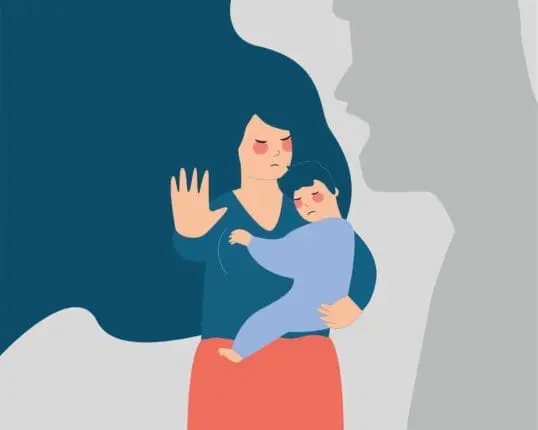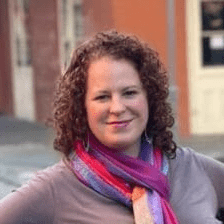If more of your clients are bringing up the subject of domestic and intimate partner violence, you’re not alone. Increasing media coverage and discussions about domestic violence and other mental health issues on social media is a large part of the reason why it’s coming up more in our consulting rooms.
As a licensed clinical social worker, clinical supervisor, and psychotherapist who specializes in working with survivors of relationship and family trauma, I speak daily with people who are impacted by discussions about domestic and intimate partner violence.
I also provide trainings and supervision for clinicians who are seeking to increase their understanding of intimate partner violence, and over the last year, I’ve seen an outpouring of questions from colleagues and other clinicians who are concerned about their clients given their experiences with intimate partner violence. News and information about domestic violence is ubiquitous, and the nonstop coverage and casual commentary around it—even seemingly benign discussions of unhealthy relationship patterns—can dredge up old feelings of insecurity, anxiety, and other painful feelings for survivors.
Celebrities like Halle Berry, Chalize Theron, Patrick Stewart, Rihanna, and Tyler Perry have all spoken out about how domestic violence has impacted them personally. Right now, the world is watching while Johnny Depp and his ex-wife, Amber Heard, testify against each other over allegations of domestic violence. Of course, non-celebrities are affected by abuse, too, as evidenced by the case of Gabby Petito. If these people can’t stay safe, some of our clients might worry, how can I?
Therapists addressing these anxieties face an uphill battle. Social media is littered with memes and bite-sized videos offering mental health tips and information that claim to offer answers to our mental health problems: TikTok videos that say they can reduce your anxious thoughts in mere minutes. Facebook articles that say they can help you better understand mental health diagnoses. Some even go as far as to suggest ways to diagnose others in your life. Recently, the National Institutes of Health declared that the volume of untrained, self-described experts offering wellness advice is having a serious impact on how we think about mental health.
My own clients have told me they get much of their news from social media, sometimes even before it hits television. Not only do we live in the age of the 24-hour news cycle, but one in which social media has become the dominant source of information. It’s no wonder so many of us reach for our phones when we feel disconnected from daily life.
For many, this comes as no surprise. But we therapists need to keep in mind that in treating our clients’ anxiety and trauma around domestic and intimate partner violence violence—and all mental health problems, for that matter—we can’t ignore the impact of social media, especially as it affects younger generations.
Recently in supervision, a colleague told me about a male client who came to her after watching a TikTok video, certain he had Complex Post Traumatic Stress Disorder (CPTSD) as the result of narcissistic abuse. He told her that his current relationship was triggering childhood trauma from domestic violence he’d experienced as a child, which made him think that his current relationship might be abusive as well. He’d recounted to her how, as the celebrity in the video discussed her personal experience of psychological abuse, he found himself nodding along. His own partner, he’d said, “did everything the video talked about.”
My colleague told me there were no indications of physical violence and the client failed to meet the criteria for his self-diagnosis, but she still wanted to explore the his concerns in a safe and welcoming way, while cautioning against listening to celebrities and their advice on social media. When she asked for my feedback on how to respond, I thought about how she might help dispel some of her biases around domestic violence stereotypes while taking into account the influence that social media is having on how our clients think about domestic and intimate partner violence. Before talking to your own clients about domestic and intimate partner violence, you might find learning about some of these myths helpful, too.
Myth #1: Only women are victims of intimate partner violence.
Mental health professionals are often the first people clients tell about their experience with domestic or intimate partner violence, since they feel like they’re in a safe space. This is why validating this experience is so important—especially for men, BIPOC, and LGBTQIA+ clients. Discouraging discussions around domestic and intimate partner violence with your clients is a lost opportunity to learn more about a legitimate experience that too often gets silenced by society. After fighting for so long to be recognized, many of my LGBTQIA+ clients are reluctant to admit they’ve experienced abuse because they worry it might reflect poorly on their identity. One of my gay clients recently told me, “If I admit that abuse happened, I worry that I’m saying everything bad I was told about homosexuality is true.”
Similarly, I’ve found that straight men who were abused by women are hesitant to come forward about it because they worry others will view them as not “man enough.” Society often thinks of abuse survivors as young, lower-income, and female, so many male survivors may not even recognize their experience as abuse. According to the National Coalition Against Domestic Violence, one out of every nine heterosexual men experiences intimate partner violence, but societal shame around deviations from expected gender roles is likely preventing more from reporting additional cases. A growing body of research indicates that even when male survivors abused by female partners do seek help, they confront multiple barriers that prevent them from receiving it, further perpetuating an environment that isn’t conducive to supporting men through domestic abuse.
Meanwhile, many of my male clients who are abuse survivors tell me they feel validated and supported by what they see and hear in social media. Given that many clinicians are female, it can feel intimidating for a male client to disclose a history of domestic or intimate partner abuse without first being validated through other channels. Some of my clients have told me it was only after seeing abuse discussed on social media that they felt comfortable disclosing their experience in therapy.
When it comes to diagnosing, many therapists lean on the DSM. Sure, it might create a common language and standard criteria around diagnosing conditions like abuse trauma. But like any guide, it isn’t comprehensive. The entry for CPTSD might describe the symptoms someone “should” be experiencing, but it offers no specifications for how they might manifest in different genders, subgroups, cultures, or marginalized populations. A gay man might not exhibit the same trauma symptoms as a straight man, just as a Black woman might present different symptoms from a white woman. Instead of discounting a client’s experience because it fails to match DSM criteria, clinicians should anticipate that different groups will likely exhibit different symptoms for the same issue.
Myth #2: Only physical trauma is legitimate.
In my experience working with survivors of domestic violence, non-physical abuse can often cause more damage than physical abuse. As childhood trauma researcher Pete Walker says, “Being ongoingly assaulted with critical words systematically destroys innate self-esteem and replaces it with a prevailing consciousness of toxic self-criticism.” This is not to say that physical abuse isn’t severely damaging, but clients who suffered psychological violence struggle to recognize their experience as abuse, and endure it longer. They also might wait to report non-physical abuse, fearing that others will want to see physical proof to substantiate it.
Some types of abuse, like rumor-spreading, posting something malicious on social media, and other revenge-seeking and psychologically destructive behaviors like stalking can be harder to identify as abuse. Few legal structures exist to protect victims from non-physical forms of violence, which means that compared to physical violence, these tactics go largely unnoticed . It’s common for survivors of physical violence to feel doubt or second-guess themselves when it comes to abuse, and non-physical violence adds an even heavier uncertainty.
Above all else, the client’s experience matters most, so when they diagnose their own psychological abuse based on something they saw on social media, we clinicians need to believe and validate them, and offer them a safe space to feel and explore those emotions.
Myth #3: Clients can’t learn anything through social media.
In the past, people might’ve waited years or decades without acknowledging their experiences with abuse, but now many clients come to my office for their first session already having found validation through external sources like social media. It makes me happy that social media has helped them put a name to their experience, even when it may not be the right name. Psychoeducation can be useful when someone comes to you believing themselves to have Bipolar Disorder after a single mood change, but dismissive comments like, “Stay off social media” or “Anything you read on social media isn’t real” are unlikely to help. Often, these kinds of suggestions lead to the client viewing you as someone who lacks the empathy needed to provide support, and they end up withholding their traumas instead of sharing them.
For all its flaws, social media is normalizing conversations around mental health, trauma, and abuse, destigmatizing these experiences and helping our clients feel more understood and validated. Without that celebrity video on CPTSD, my colleague’s client might’ve never brought up his experience in therapy. He and my colleague might’ve spent months exploring other possible sources of his insomnia, anxiety, hypervigilance, and headaches, possibly leading to medicating a chemical imbalance that he never had. Instead, a social media post jumpstarted a conversation that paved the way for deeper healing.

Over the course of several supervision sessions, I helped my colleague clear up her biases around these abuse myths so she could develop a more complete understanding of her client’s experience. Once she realized he was indeed the victim of domestic abuse—in childhood, and again in his more recent relationship—she was able to work with him on a much deeper level.
Social media may not be a perfect resource, but it’s not going away, and it’s imperative to understand its presence and influence in many of our clients’ lives. However, I’m hopeful that therapists can take a more active role in talking about how it shapes our clients’ understanding of mental health problems so any information, tips, or advice becomes more clinically informed.
Image © iStock/salim hanzaz
Kaytee Gillis
Kaytee Gillis, LCSW-BACS, is a psychotherapist, writer, and author with a passion for working with survivors of family trauma and IPV. Her work focuses on assisting survivors of psychological abuse, stalking, and other non-physical forms of domestic violence and family trauma. Her recent book, Invisible Bruises: How a Better Understanding of the Patterns of Domestic Violence Can Help Survivors Navigate the Legal System, sheds light on the ways that the legal system perpetuates the cycle of domestic violence by failing to recognize patterns that hold perpetrators accountable.












